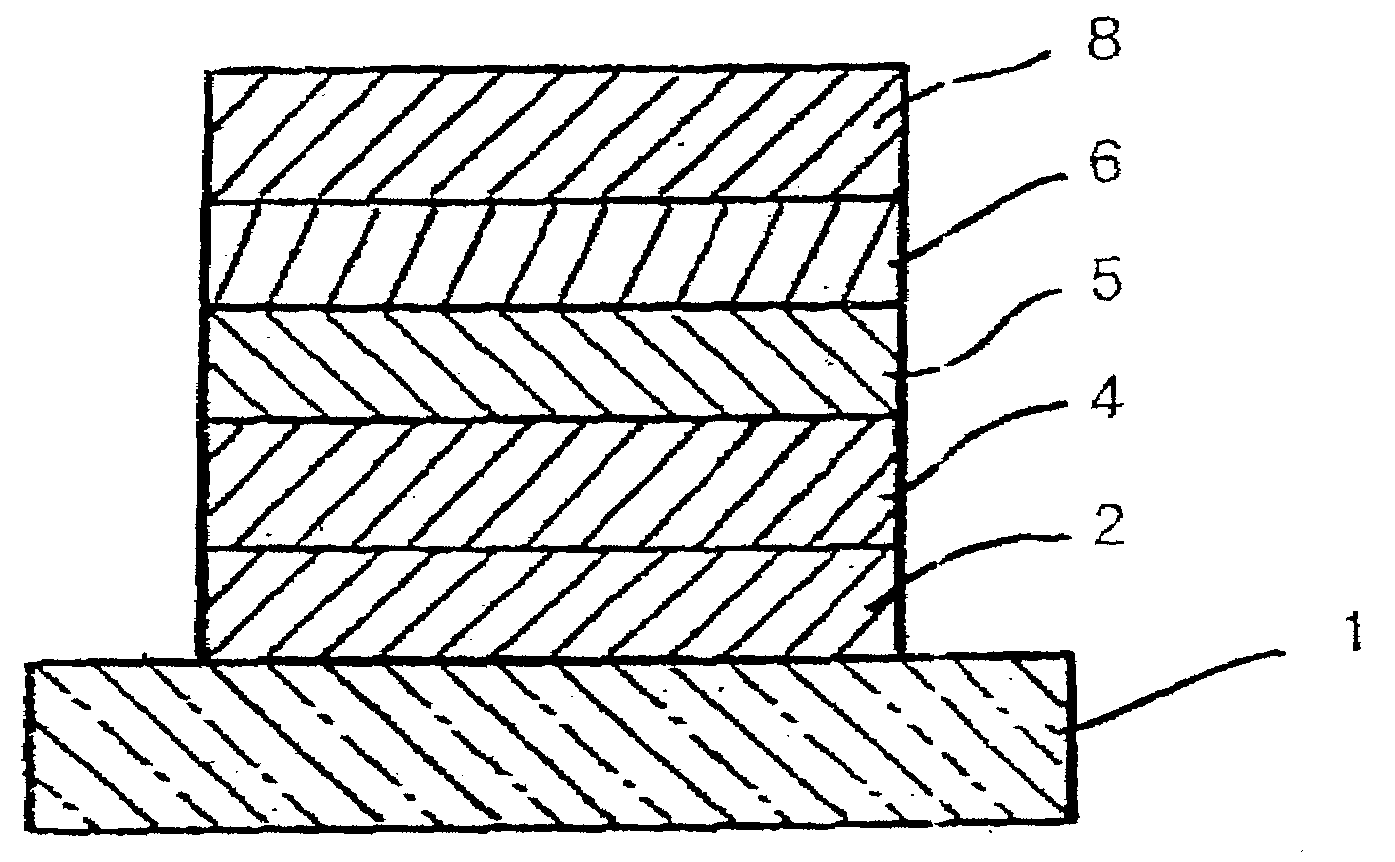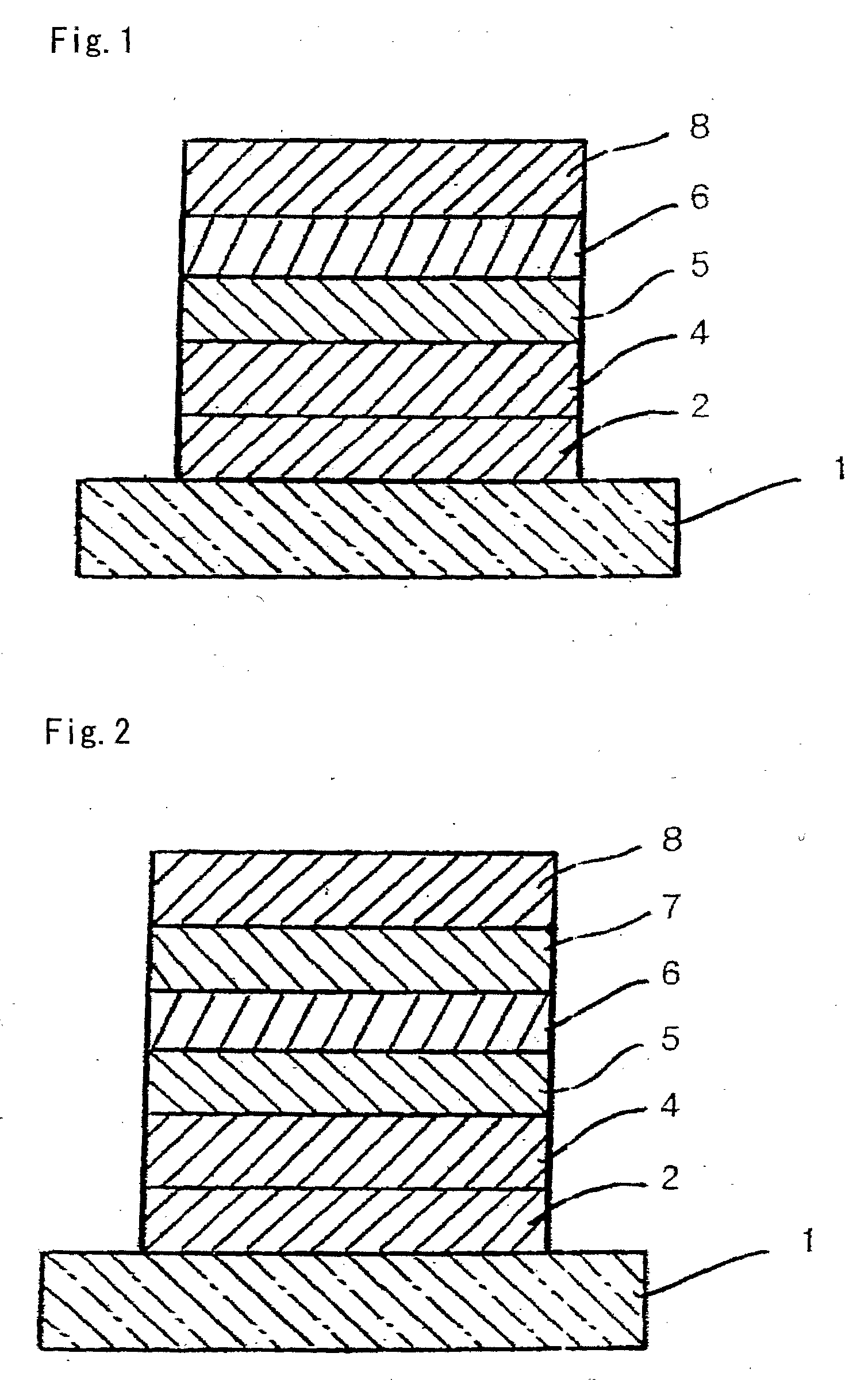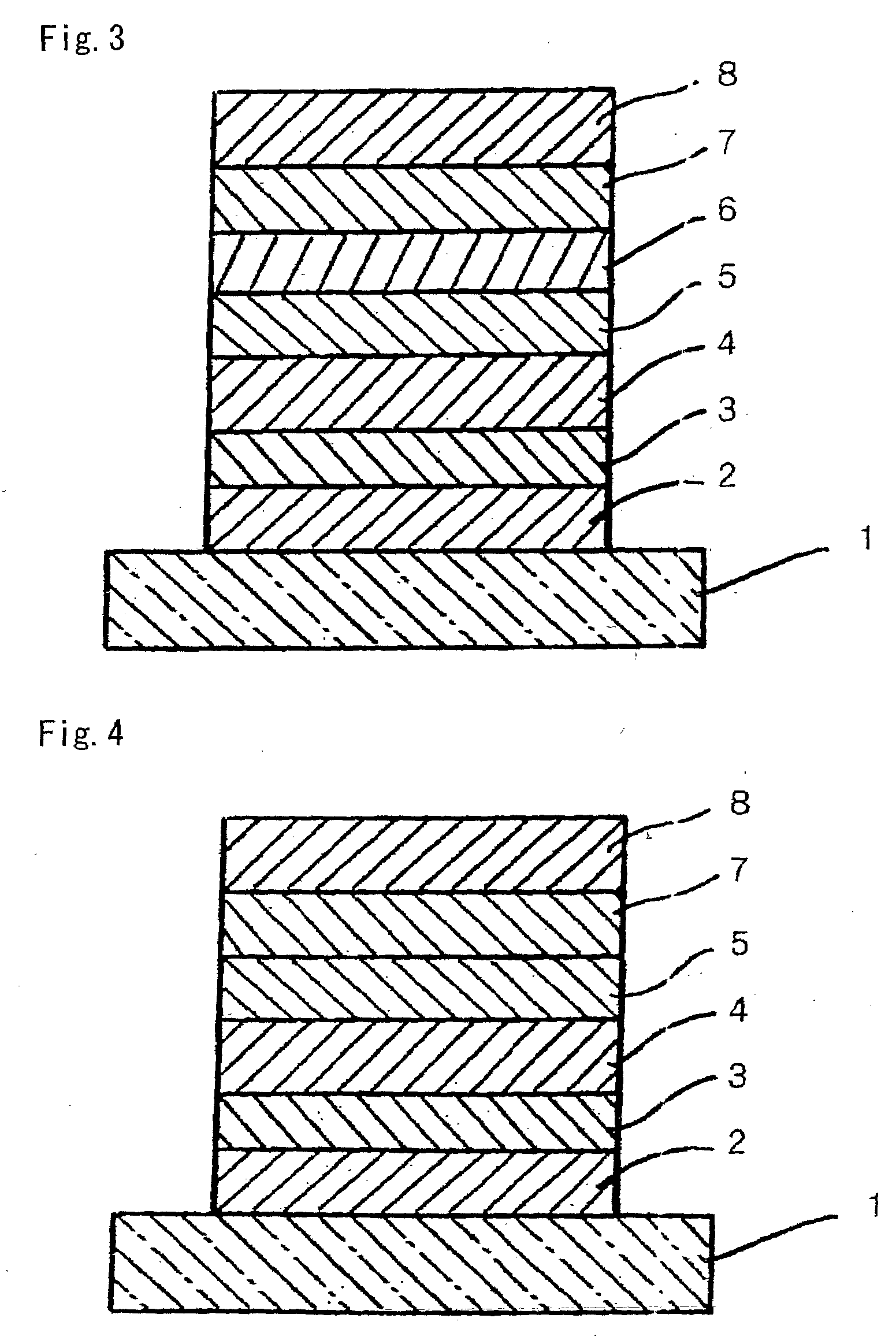Organic compound, charge-transporting material, and organic electroluminescent element
a charge-transporting material and organic technology, applied in the field of organic compounds and charge-transporting materials, can solve the problems of insufficient luminous efficiency, unbalanced, and insufficiently achieved, and achieve excellent heat resistance and film-forming properties
- Summary
- Abstract
- Description
- Claims
- Application Information
AI Technical Summary
Benefits of technology
Problems solved by technology
Method used
Image
Examples
synthesis example 1
Target Compounds 1 and 2
[0370]
[0371]3-Fluorobenzaldehyde (6.74 g), 3-fluoroacetophenone (15 g), ammonium acetate (53.56 g), and acetic acid (136 ml) were stirred while heating under reflux for 10 hr, and were then allowed to cool to room temperature. Then, the crystal precipitated in the system was collected by filtration, washed twice by suspending it in ethanol, and dried under reduced pressure to obtain 4.15 g (yield: 22%) of a target compound 1 as a white crystal.
[0372]A mixture solution of sodium hydride (55%) (1.45 g) and 100 ml of dimethylformaldehyde was sufficiently stirred under nitrogen atmosphere while gradually adding carbazole (5.55 g) thereto. Then, the mixture was heated to 80° C. while stirring. When the system was completely dissolved, and then the previously synthesized target compound 1 (2.0 g) was added thereto. Then, the mixture was stirred while heating under reflux for 28 hr, and was then allowed to cool to room temperature. Then, 90 ml of water and 90 ml of ...
synthesis example 2
Target Compounds 3 and 4
[0375]
[0376]Benzaldehyde (3.18 g), 3′,5′-difluoroacetophenone (9.37 g), ammonium acetate (29.6 g), and acetic acid (75 ml) were stirred in air at 100° C. for 4.9 hr, and then cooled by ice. Methanol and water were added thereto, and the resulting precipitate was collected by filtration and purified by suspending it in methanol. After drying by heating under reduced pressure, a target compound 3 (2.03 g) was obtained.
[0377]Carbazole (5.37 g) was added to an anhydrous N,N-dimethylformamide suspension (100 ml) containing sodium hydride (55%, 1.40 g) under nitrogen flow, and the resulting mixture was stirred at 80° C. for 60 min. Then, the target compound 3 (2.03 g) was added thereto. Then, the mixture was stirred while heating under reflux for 4.9 hr. Water (50 ml) and methanol (50 ml) were added to the mixture while cooling on ice. The resulting precipitate was collected by filtration and washed with methanol. The resulting solid content was extracted from chlo...
synthesis example 3
Target Compounds 5 and 6
[0380]
[0381]3′-Bromoacetophenone (25.0 g), benzaldehyde (6.66 g), ammonium acetate (62.0 g), and acetic acid (157 ml) were stirred while heating under reflux for 9 hr, and were then allowed to cool to room temperature. Then, the precipitated crystal was collected by filtration, washed twice with ethanol, and dried under reduced pressure to obtain a target compound 5, namely, 2,6-bis(3-bromophenyl)-4-phenylpyridine (6.72 g, yield: 23%), as a white crystal.
[0382]Under nitrogen flow, 2,6-bis(3-bromophenyl)-4-phenylpyridine (1.45 g), carbazole (1.56 g), copper powder (0.40 g), potassium carbonate (1.72 g), and tetraglyme (5 ml) were stirred while heating under reflux for 11 hr, and then allowed to cool to room temperature. Chloroform (200 ml) was added thereto and the resulting mixture was stirred. The insoluble matter was removed by filtration. Chloroform contained in the filtrate was evaporated under reduced pressure, and then methanol was added thereto. The re...
PUM
| Property | Measurement | Unit |
|---|---|---|
| melting point | aaaaa | aaaaa |
| vaporization temperature | aaaaa | aaaaa |
| glass transition temperature | aaaaa | aaaaa |
Abstract
Description
Claims
Application Information
 Login to View More
Login to View More - R&D
- Intellectual Property
- Life Sciences
- Materials
- Tech Scout
- Unparalleled Data Quality
- Higher Quality Content
- 60% Fewer Hallucinations
Browse by: Latest US Patents, China's latest patents, Technical Efficacy Thesaurus, Application Domain, Technology Topic, Popular Technical Reports.
© 2025 PatSnap. All rights reserved.Legal|Privacy policy|Modern Slavery Act Transparency Statement|Sitemap|About US| Contact US: help@patsnap.com



